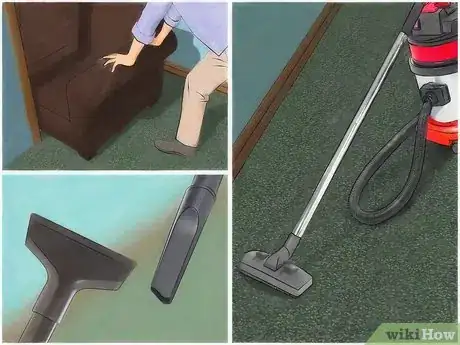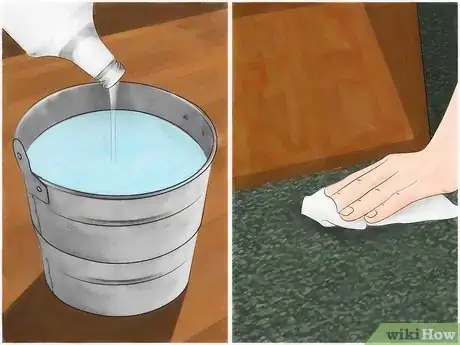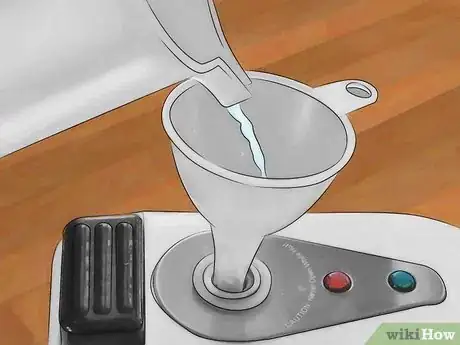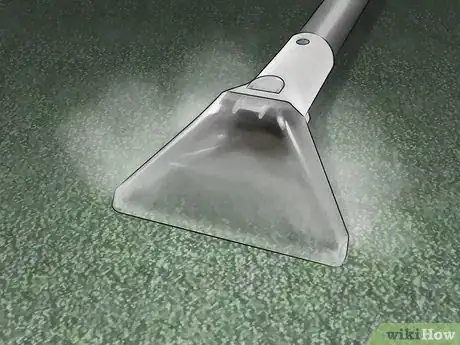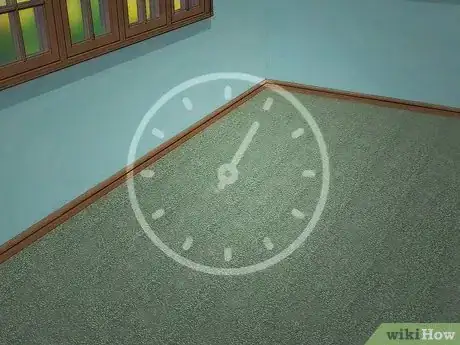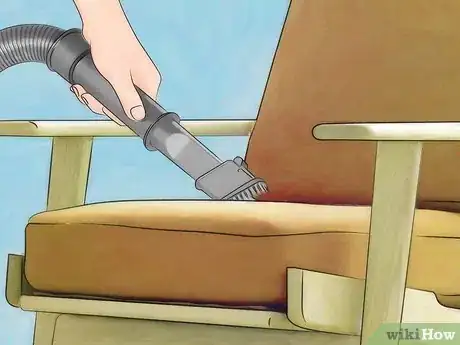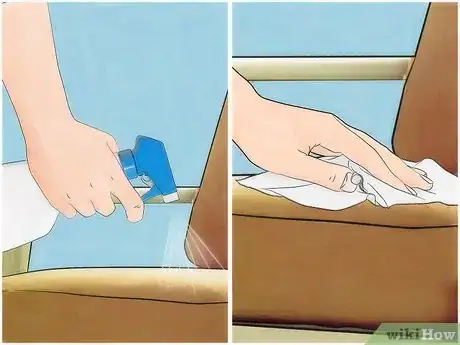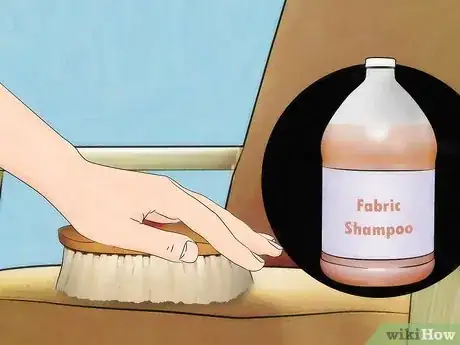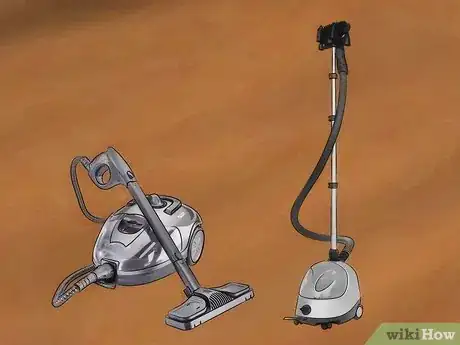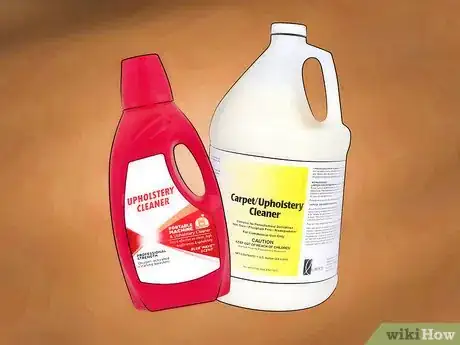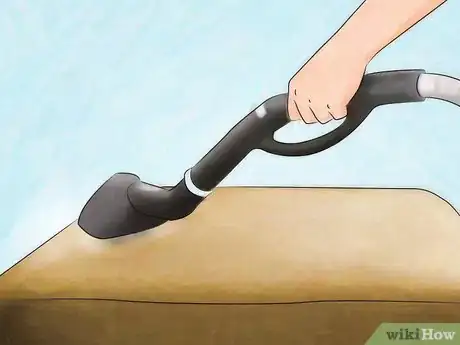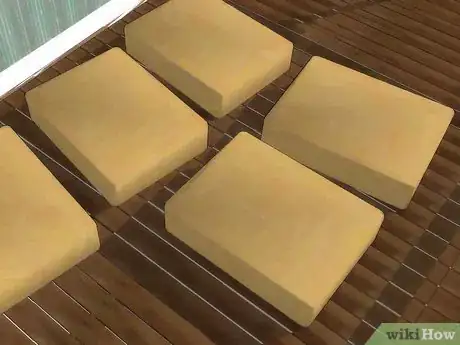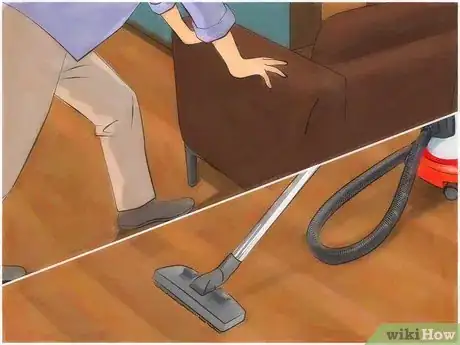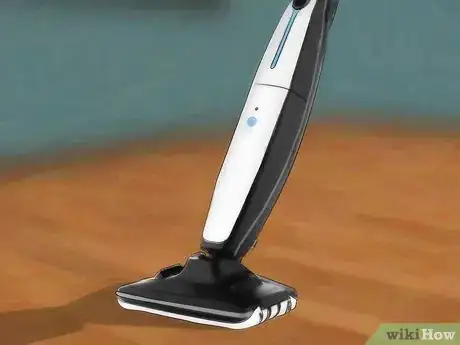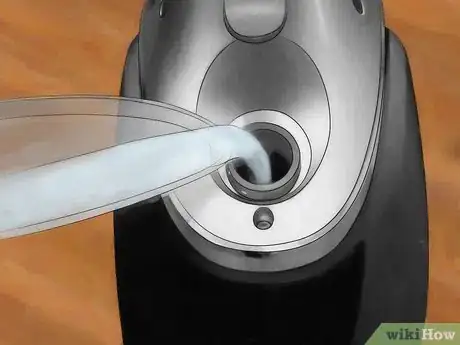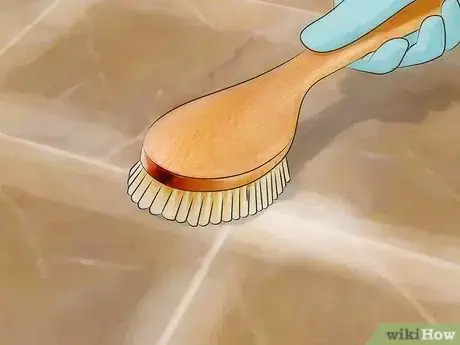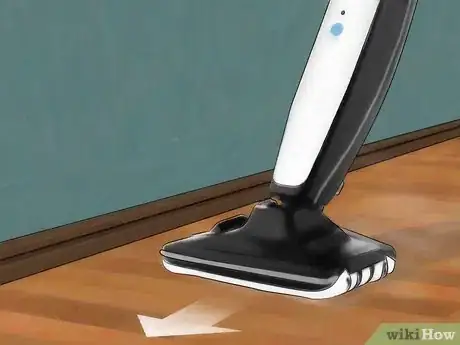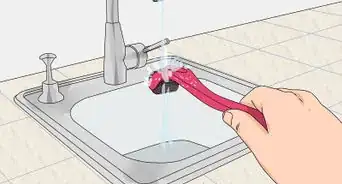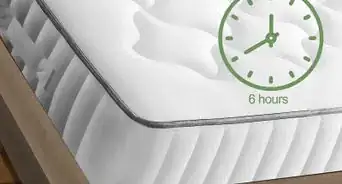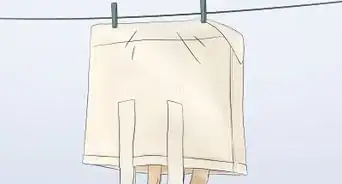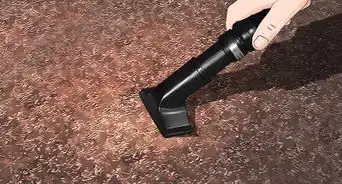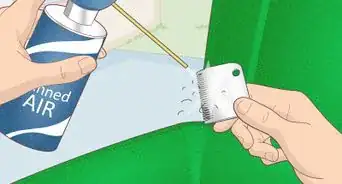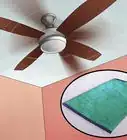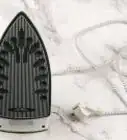This article was co-authored by Elias Weston. Elias Weston is a Cleaning Specialist and the Founder of Seatown Cleaners in Seattle, Washington. Elias specializes in helping clients find cleaning services with instant booking and flexible pricing. Seatown Cleaners offers standard, deep, and move-in/out cleaning services using green products and cleaning techniques. Every cleaner is thoroughly vetted and every cleaning is backed by a 100% money-back guarantee.
This article has been viewed 74,267 times.
When vacuuming your floors or furniture no longer seems to get them looking clean, it might be time to consider a more thorough cleaning. You can rent or buy a steam cleaner and use it to deep-clean many different surfaces, including carpeted, hardwood, and tile floors. The process is relatively simple, but different approaches should be used for different surfaces. Knowing how to steam clean properly will ensure that you remove as many stains, allergens, mold, and dirt as possible without damaging your floors or furniture.
Steps
Steaming Carpets and Rugs
-
1Vacuum your carpet. This will remove any loose debris, dirt, pet hair, lint, and other items from the carpet. This step is critical to getting the best results possible from your steam cleaning efforts. [1] [2]
- Move all furniture in the room off of the carpet or rug so you can thoroughly vacuum every bit of the area to be cleaned.
- Use your vacuum's hose and tool attachments to clean the baseboard areas and corners of the room, which can be hard to reach using a standard upright vacuum.
- Replace your vacuum's filter(s) and empty the canister (for bagless) or change out the bag (for bag style) before vacuuming. This will ensure that your vacuum's suction power is as high as possible for best pre-cleaning results.
- Go over the same areas twice of more to pick up anything that was missed on the first pass.
- Do not attempt to steam clean a carpet without vacuuming first. If you don't have a vacuum, rent one or borrow one from a friend.
-
2Test your cleaning solution. Pour a small amount of the cleaner you plan to use into a small bucket of hot water and allow the two to mix. Rub a bit of the solution into a test patch into a small area of your carpet (no more than 8 square inches). Let the solution sit on the carpet for about 10 or 15 minutes and then check on it. If the carpet appears to be at all discolored, dilute the solution a bit more then run a second test.[3]
- Ideally, you should use a spare scrap of your carpet or a spot that is normally out of sight (such as the corner of a closet) to do the test. If your solution discolors or burns the test patch, you don't want it to be somewhere obvious.
- If your carpet reacts severely to the cleaning solution, consider using a milder cleaner. Some carpets might not do well against certain types of cleaners, and you don't want to risk destroying yours.
Advertisement -
3Mix your solution in the machine's tank. For this step, follow the instructions on the steamer and the bottle of cleaner (if you're using a store-bought one). Fill the tank on the steam cleaning machine with hot water to the maximum fill line. Mix in the appropriate amount of cleaner for the volume of water you are using, as stated on the cleaner bottle (for example, one fl. oz. per half gallon of water).
- Some steamer machines may not have a water tank and instead will include a hose you can attach to your kitchen or bath tap. If you are using this kind of steamer, make sure you turn on the hot water on the faucet.
- Be sure to add the cleaner and water to the correct tank on the machine. It can be easy to mistake the dirty water reservoir for the clean water tank if you aren't paying attention.
- Follow all safety guidelines on the cleaner bottle and wash your hands immediately if you get any on your skin.
- You can also create a homemade cleaning solution that may be gentler on your carpet and safer for pets and small children than the typical chemical mixtures you can buy in most home supply stores. Some people use laundry detergent or dish soap (highly diluted), or more natural ingredients such as citrus-based organic cleaners.[4]
-
4Begin steam cleaning. Make sure the machine is plugged into an outlet that will keep the power cord out of the way, then turn it on and begin! Most steam cleaners are shaped like upright vacuums and have a have a trigger or handle that can be depressed and held down to release the hot cleaning solution onto the carpet as you roll the machine forward. To suck up the solution, release the trigger and slowly roll the machine backwards over the area you just covered.
- Start in a far corner of the room so you can work your way back toward the doorway. This way, you won't have to step on carpet you've already cleaned.
- Go over areas with stubborn dirt or stains more than once for optimal steam cleaning results.
- Keep an eye on your clean water tank so you know when it's time to refill the machine. You may also notice the machine sputtering a bit while trying to dispense solution when it's running out.
-
5Let the carpet dry. You should not step on the carpet while it's wet if at all possible. This could soak the pad underneath the carpet and promote mold growth. Dirt and debris will easily cling to wet carpet fibers, so this is another reason to stay off while it's drying.
- If it is not raining or too cold outside, open a window in the room to increase air flow. This should help the carpet dry faster.
- If you have a small heater with a fan in it, you might be able to speed the drying process by placing it on a chair or table and pointing it into the room you have just cleaned. For safety reasons, do not leave heaters unattended.
Steaming Upholstery
-
1Vacuum your furniture. As with cleaning carpets, upholstery should be pre-cleaned before steaming. This is so loose dirt, hair, and debris won't be ground into the fabric when you steam clean it. Use a vacuum with an upholstery attachment to do this.[5]
- If you don't have a vacuum or yours has no attachments that can be safely used on furniture, use a sticky lint roller to remove as much visible debris from the fabric as possible. This may require several passes to get it all.
- Be sure to get into the crevices of the furniture, as these areas tend to trap the most dirt.
-
2Pre-treat stains. If your furniture has a stain or a particularly dirty spot you wish to get clean, pre-treat this area by spraying it with an upholstery cleaner designed for this purpose. You might need to let the spray set for three to five minutes before continuing (or as recommended).[6]
- Don't over-saturate the upholstery with the spray cleaner. Follow the recommendations on the bottle to avoid this.
- Once you have let the cleaner set in, blot the area with a clean, color-safe towel. You should be able to soak up excess wetness this way, but the spot will still be damp.
- You may wish to wait for the spot to dry and assess it before moving on. By doing this, you can determine whether the spray cleaner was enough to remove the stain and whether steam cleaning is still necessary.
-
3Precondition the upholstery. After spot-treating stains, pre-clean your upholstery with a fabric conditioner such as a soil emulsifier or fabric shampoo.[7] Use a soft-bristled hand brush (one that will not damage the upholstery) to gently scrub the conditioner into the fabric. This is only necessary for furniture that is very dirty. You can purchase these items at any home store that sells or rents steam cleaners.
- Before doing this, check the tag or label on your furniture to make sure the fabric will not be ruined if it gets wet. If there are special cleaning instructions printed on the tag, follow these. If the upholstery can't get wet, you won't be able to steam clean it.
- On microfiber upholstery, use a sponge instead of a brush; brushes (even soft-bristled ones) can damage microfiber.
- Remove detachable cushions in order to more easily and thoroughly clean all fabric surfaces.
- You do not need to rinse or clean off the fabric conditioner before steam cleaning.
-
4Choose the proper steamer. Not all steam cleaners are the same, so you should choose one that is specifically designed for cleaning upholstered furniture. Carpet steamers might not include attachments for furniture, so these won't work for your purpose. Upholstery-specific steamers usually have a free-standing tank attached to a long hose with a tube-shaped attachment.[8]
- Make sure the steamer you choose has an attachment you can safely use on your furniture. Some might include stiff bristles around the mouth of the nozzle, which could be too rough for delicate upholstery.
- Whereas some carpet steamers can even be rented from grocery stores, upholstery-specific steam cleaners are somewhat more rare. You will probably have to go to a home supply store such as Home Depot or Lowe's to rent a furniture steamer.
-
5Select an upholstery-specific cleaner. The cleaners intended for use on carpet may be too harsh for your furniture fabric. Choose a cleaner made specifically for upholstery and mix it into the steam cleaner's tank with hot water. Be sure to follow the instructions on the cleaner bottle and on the machine itself to ensure you use the correct proportions of water and cleaner.
- Spot-test the cleaning solution on the underside of a cushion or some other place where any color damage won't be visible. Rub the solution on a small patch of the upholstery and let the solution sit for a few minutes. Check to make sure it doesn't cause the fabric to change color.
- Make sure you like the smell of the cleaner before using it on your upholstery. Some cleaners are scented and could make your furniture take on their smell. Avoid any cleaner you think is too fragrant or harsh-smelling.
-
6Start steam cleaning your furniture. Position the furniture in a place where it can easily dry and won't be touched while it is still wet. Make sure you can reach all the fabric surfaces and remove all detachable cushions or covers. Use the trigger or button on the steamer handle to release the cleaning solution as you move the wand across the fabric. Release the trigger and slide the wand over the same area to vacuum up the solution.
- Start with the cushions so they will have more time to dry.
- Start at one corner of the furniture or one of its cushions and work your way across the fabric gradually to avoid missing spots.
- Watch the steamer tank so you know when it's time to refill. If the machine runs out of solution, you will notice that the fabric no longer looks wet after holding down the trigger.
-
7Let the furniture dry before using it. If possible (and if the weather is not too wet or cold), open a window or door near the furniture to help it dry faster. For cushions, consider propping them up against a clean surface in a place where they will be in direct sunlight.
- Use a small heater and/or fan to speed up the drying process if you live in a humid or rainy climate. Don't place heaters too close to furniture, or they could damage or burn the fabric. Don't leave heaters unattended.
- Keep cushions and covers off the furniture until everything is completely dry. It may take an entire day or more for cushions or padded surfaces to dry completely, as they tend to soak up water.
- If possible, hang your cushions up while they dry so they do not sit on a damp edge for too long (which will make it harder for them to dry). If you cannot do this, rotate them every hour or so wherever they are sitting to make sure all surfaces get good exposure to the air.
Steaming Hardwood, Laminate and Tile Floors
-
1Prepare the area. Remove all furniture and other items from the area to be cleaned. Sweep or vacuum the floor thoroughly and be sure to get any loose debris, dirt, hair, etc. out of the corners and away from baseboard edges.[9]
- It is important to remove grit, rocks, sand, and other rough particles from the floor before steam cleaning, as these can leave scratches.
- If vacuuming, us the 'hard floor' setting to remove as much dirt as possible. You may need to use handheld attachments to get into the corners or right up against baseboards.
- If the floor you are cleaning is right next to an outside door, put a note on the outside of the door that lets people know not to walk on the floor while you're cleaning it.
-
2Select a hard-floor steamer. Steam cleaners made specifically for hard surfaces will provide the best results, so choose one made for this purpose when buying or renting a machine. Most are the upright style, resembling a standard vacuum. Hard floor steam cleaners are usually lighter weight and less bulky than those made for carpets and do not spray water directly onto the floor.[10]
- Not all hard floor steam cleaners are safe to use on wood floors. If you intend to steam clean a wood floor, make sure your steamer is approved for this.
- Hard floor steam cleaning is usually done using only hot water (no cleaning solution). However, if you need to remove stubborn stains or sanitize your floor, you can mix in a neutral-pH floor cleaner. Only do this if the steam cleaner specifies that cleaning solutions can be used with it.
- If you decide to use a cleaner for steam cleaning, make sure it will not discolor or strip the finish off of laminate or wood flooring.
- Make sure wood floors are properly sealed before steam cleaning. If you have a worn spot where no finish is left on the wood, moisture could soak into the wood and cause warping or water staining.
-
3Prepare the machine. Once you're ready to begin steam cleaning, remove the machine's water canister and fill it with hot tap water. Check the machine's filter to make sure it's clean; rinse it off in a sink or bathtub if it's dirty. Reattach the canister and turn the machine on, heating the water until it begins to form mist.[11]
- Unlike most carpet steamers, hard floor machines will begin emitting steam once they've been heated sufficiently, indicating they are ready for use.
- If you mixed a cleaning product into the steamer, try not to breathe in the steam, as it may contain particles from the cleaner.
-
4Pre-treat tile grout. If you are cleaning a tile floor with stained or dirty grouting, you may want to pre-clean the grout before steaming it. Use a specially made grout cleaner and scrub it on with a stiff-bristled brush (made of nylon or brass, for example). Wipe off the surface with a damp rag or cloth once you've sufficiently scrubbed it.
- This can be a very time-consuming and tedious task. In many cases, steam cleaning will be enough to get the grout clean, so only do this if you have extremely dirty or unsanitary tile grout.
- You do not need to get the surface totally spotless before steaming, as this process will clean away any residue left from your grout pre-treatment.
- Some tile floor steamers have attachments specifically for cleaning grout.[12] These often include hand-held attachments with stiff bristles on the end of a narrow wand that you can use to scrub the grout as the machine emits steam. This is a good way to pre-treat grout before steaming the rest of the floor.
-
5Steam your floor. Once the machine is heated up, slowly push it along the floor like you would a push broom. Steam is given off at the base of the machine and moistens the floor (but does not soak it) as you push it forward. Pull the mop back across the steamed area to allow the cleaning pad to mop up any excess residue.
- Start on one side of the room and work your way across to the other, moving backward as you go so you don't step on the freshly-cleaned surface.
- Let the floor dry by itself before you walk on it or put furniture or rugs back into place. It is not necessary to towel-dry it.
- Open doors and windows (weather permitting) to speed drying. You can also place a fan near the clean floor to improve airflow through the room.
Expert Q&A
-
QuestionWhat's the benefit of steam cleaning something?
 Elias WestonElias Weston is a Cleaning Specialist and the Founder of Seatown Cleaners in Seattle, Washington. Elias specializes in helping clients find cleaning services with instant booking and flexible pricing. Seatown Cleaners offers standard, deep, and move-in/out cleaning services using green products and cleaning techniques. Every cleaner is thoroughly vetted and every cleaning is backed by a 100% money-back guarantee.
Elias WestonElias Weston is a Cleaning Specialist and the Founder of Seatown Cleaners in Seattle, Washington. Elias specializes in helping clients find cleaning services with instant booking and flexible pricing. Seatown Cleaners offers standard, deep, and move-in/out cleaning services using green products and cleaning techniques. Every cleaner is thoroughly vetted and every cleaning is backed by a 100% money-back guarantee.
Cleaning Specialist Steam cleaning removes debris and stains without the use of chemicals, and it’s an easy way for homeowners to safely clean floors and upholstery. It not only removes dirt and stains, but it also sterilizes surfaces and eliminates germs, allergens, mites, and bed bugs.
Steam cleaning removes debris and stains without the use of chemicals, and it’s an easy way for homeowners to safely clean floors and upholstery. It not only removes dirt and stains, but it also sterilizes surfaces and eliminates germs, allergens, mites, and bed bugs. -
QuestionWhere does the dirt go when I steam clean?
 LojjikCommunity AnswerThe dirt is loosened and spread out, but remains in the area. You need to wipe down after steam cleaning to pick up the loosened dirt.
LojjikCommunity AnswerThe dirt is loosened and spread out, but remains in the area. You need to wipe down after steam cleaning to pick up the loosened dirt.
Warnings
- Wear eye protection and rubber gloves when handling toxic chemical cleaners to avoid coming into contact with them.⧼thumbs_response⧽
- Wear a painter's mask or other mouth and nose cover if you are using chemicals with strong odors.⧼thumbs_response⧽
- Some carpet and upholstery cleaning solutions contain harsh chemicals. If you have children or pets use these cleaners with caution or consider using milder solutions that do not contain hydrogen peroxide or diluted lemon juice instead of chlorine or bleach.⧼thumbs_response⧽
Things You'll Need
- A steam cleaning machine
- Hot water
- Cleaning solution
- A power source
References
- ↑ http://homeguides.sfgate.com/steam-cleaning-carpets-tips-tricks-secrets-28926.html
- ↑ Elias Weston. Cleaning Specialist. Expert Interview. 30 January 2021.
- ↑ http://homeguides.sfgate.com/steam-cleaning-carpets-tips-tricks-secrets-28926.html
- ↑ http://www.angieslist.com/articles/dry-carpet-cleaning-vs-steam-cleaning-methods.htm
- ↑ Elias Weston. Cleaning Specialist. Expert Interview. 30 January 2021.
- ↑ Elias Weston. Cleaning Specialist. Expert Interview. 30 January 2021.
- ↑ http://www.howtocleananything.com/tag/steam-cleaning-upholstery/
- ↑ Elias Weston. Cleaning Specialist. Expert Interview. 30 January 2021.
- ↑ http://cleaning.lovetoknow.com/How_to_Steam_Clean_Hardwood_Floor
